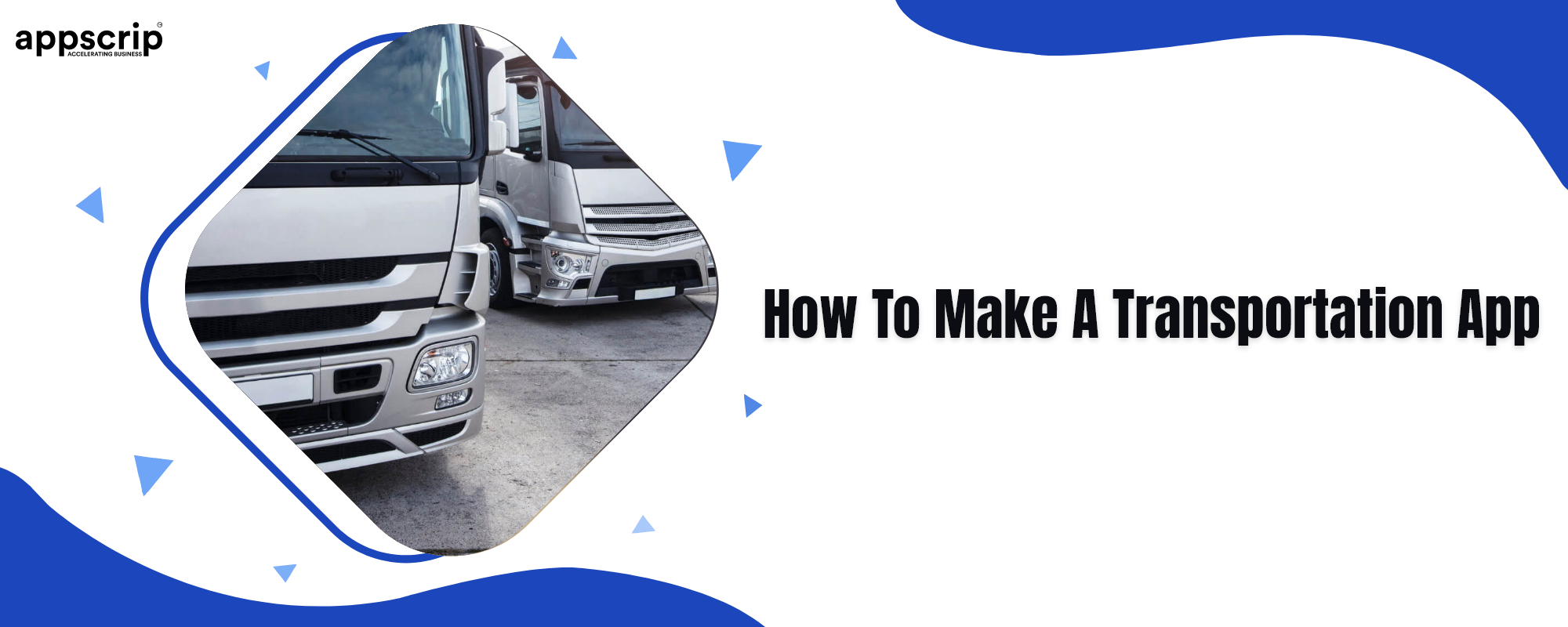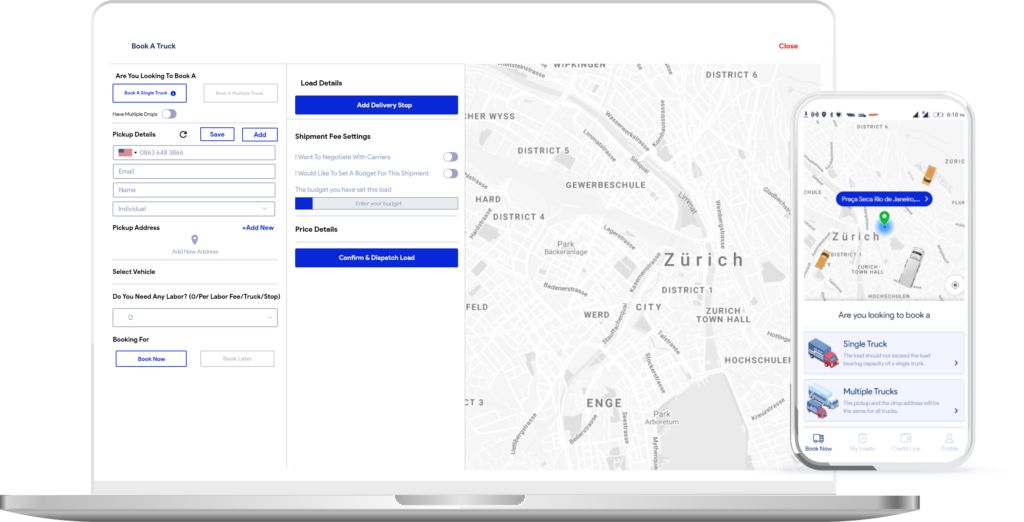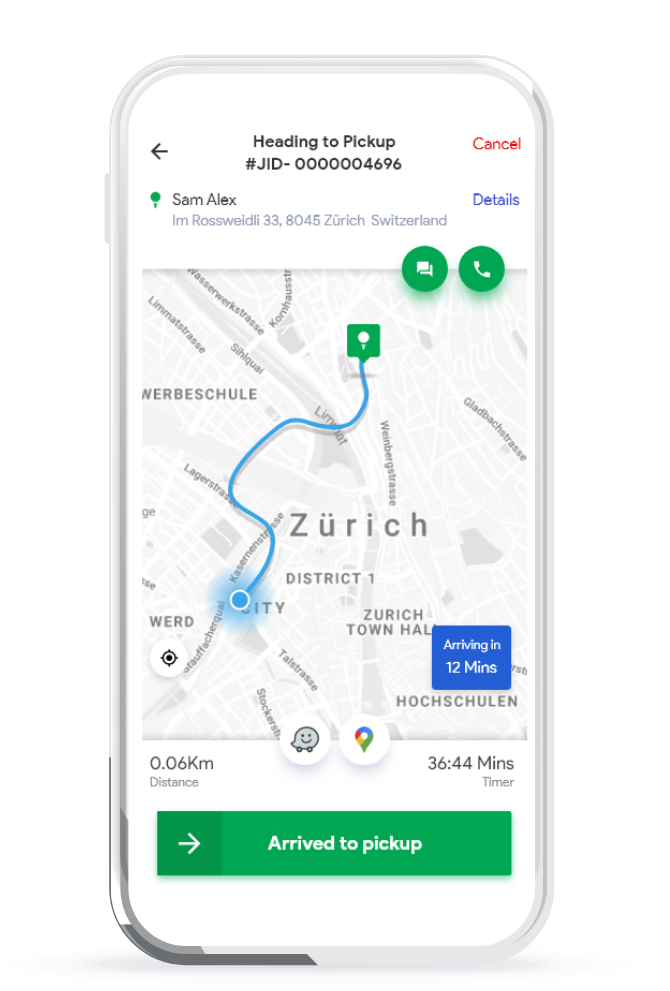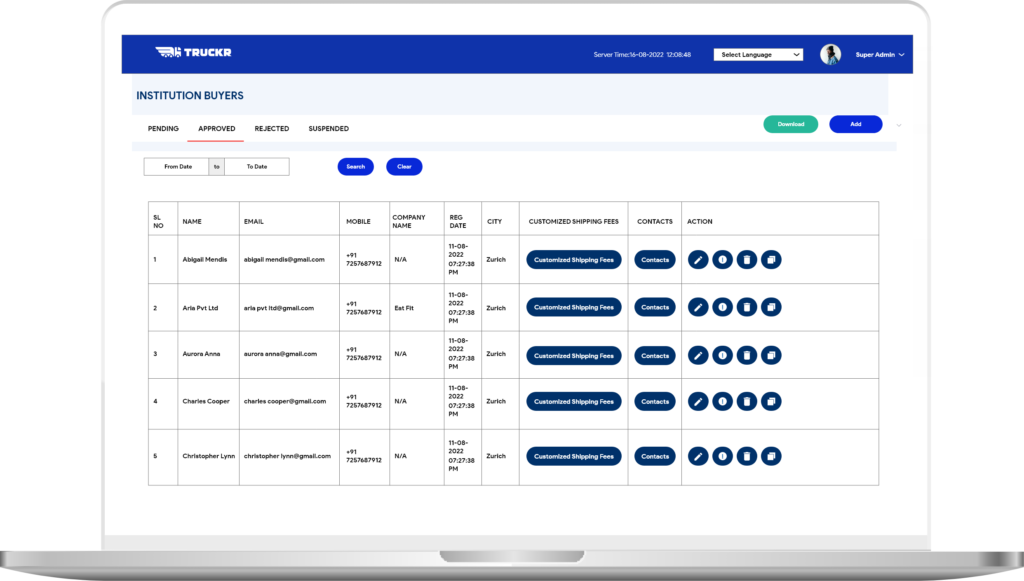Uber revolutionized ride-hailing from an arduous affair to a technical splendor. Therefore, investors and transportation company owners have shifted their focus to this industry. A report by the Federal Highway Administration of the US Department stated that in the near future, mobile applications would dominate the management of various factors that govern the transportation business.
Before we get into how to make a transportation app, let’s discuss why we need a transportation app!
Transportation has always been a struggle in any logistics industry. Minor mismanagement can lead to losses in millions of dollars. To avoid that, many companies with an elaborate supply chain are slowly transitioning to make the process completely app-driven for better fleet management.

Main Reasons To Build A Transportation App
- Reduce Paper Work- Gone are the days of maintaining records with hundreds of files. Mobile solutions have made it easier to collect, consolidate, and manage data from varied sources. Thus, it is easier to analyze progress.
- Location Tracking- Location tracking has always been a challenge in a big-scale production industry. Real-time geographical positioning not only helps the administrator to track the exact location but also makes the logistics processes transparent.
- Reduced cost and improved management- The mobile app optimize various steps, reducing costs and time which otherwise would have been difficult to manage in a traditional method. In addition, with real-time and accurate data, a transportation app also contributes to faster decision-making.
Steps Involved In Building A Transportation App
Step 1-Identify the type of app you need
The first step in building a transportation app is to identify the industry you want to focus on, be it ride-hailing, fleet management, logistics management, warehousing, etc. This is the step where one has to define the objective of the app and lay out its working model.
Step 2- Target Audience
The second step is where you identify the target audience. A transportation app may be for the following three categories: driver, user, and admin. Understanding people’s needs and pain points are critical for integrating the best features into the app.
Step 3- The Features
This step determines the workability of the application. To penetrate the market well among the competitors, the features integrated into the app solve existing problems. Adding as many features as possible might sound like a solution, but it would only lengthen the work process for your developer. Understanding the priority of the features is important while determining what to add and what not to.
Step 4- Tech Stack
When building a mobile app, there are three major platform types you can choose from native, hybrid, or mobile Web. The next step is to determine the tech stack to integrate the features in the application. One can also choose to hire or outsource the process to a technical team to get the preferred tech stack.
Step 5- App Building
Some companies have an in-house development team for the task, and some prefer to outsource it. Although outsourcing could be more advisable so as to reduce the workload on the in-house team.
Step 6- Maintaining
The last and final step is the maintenance of the app. For it to survive for a longer period of time, one needs to ensure whether the app will be maintained by the in-house team or the outsourced team. If the in-house team is going to handle it, there should be a proper transition of the base code, server, etc.
Key Features
The features make or break an app. Below, we have discussed some of the popular features of a transportation app.
Customer Panel
- Push Notifications- Push notifications are a necessary feature in any transportation application to alert users of any unexpected failures, emergencies, or delays. Push notifications can also be used to keep the users updated on the status of their order so that they are not perturbed regarding the situation.
- Messaging- Messaging is an important facet of any app. The user should be able to communicate with the driver or the admin as per the requirements.
- Vehicle Booking- If you are looking to build a ride-hailing app like Uber, users should be able to book and schedule their rides. The booking feature should have options like fare estimation, user authentication, profile management, driver rating, etc.
Driver Panel
- Map and Navigation Guidance- The app should have an integrated map with guided navigation to help the drivers find the best route. The app can also provide live information on the traffic situation to find the most optimal route.
- Log Features- Drivers can update their daily and hourly activities like mileage covered, deliveries done, number of work hours, etc. This is also a useful feature for admins.
Admin
- Offline Support- The driver or user could sometimes be located where the internet connectivity may be poor. In such cases, offline support will come in handy to ensure nothing majorly goes wrong.
- GPS Location tracking- This is an essential feature for the user, the driver, and the admin. With real-time information on the driver and packages, admins and managers will be updated regarding the current status. Thus, they can be easily altered in the event of an emergency.
Tech Stack
Choosing the right tech stack is the next step after deciding the features you want to integrate into the app. These are a few examples of the stack one can use.
Authentication- Access+Refresh token using JOSE implementation(JWT+JWK+JWE)
Payment Gateway- Stripe, Paypal, Braintree, Razorpay, etc.
Database Management- Mongo, Redis, ElasticSearch
Cloud Functionality- Docker containers over cloud providers like AWS, Azure, GCP, etc.
Frontend Development-Angular/PHP (admin)/react(dispatcher)
Backend Development- Node.js, Python, Golang
Mobile App Development- Android-Java+Kotlin, Ios-Swift
Messaging And Support- Twilio, MSG91, etc.
Messaging(chat)- MQTT, Support-Zendesk/Live Chat
Conclusion
I am sure you would have gained some amazing insights on how to go about making a transportation app. Smartphones and mobile apps have paved their way into every industry, with transportation being one of them. Considering the number of industries where an app would be necessary, businesses are poised to make headway in every sector by building a functional app.
This is where Appscrip comes in, we have the required expertise in building apps for several domains. We have been building applications for clients all over the world and also have the necessary competence in building an efficient and highly functional transportation mobile app with the fleet management system, logistics management, ride-hailing, and other transportation-related modules.
Contact Appscrip today for a customized transportation app development solution.













